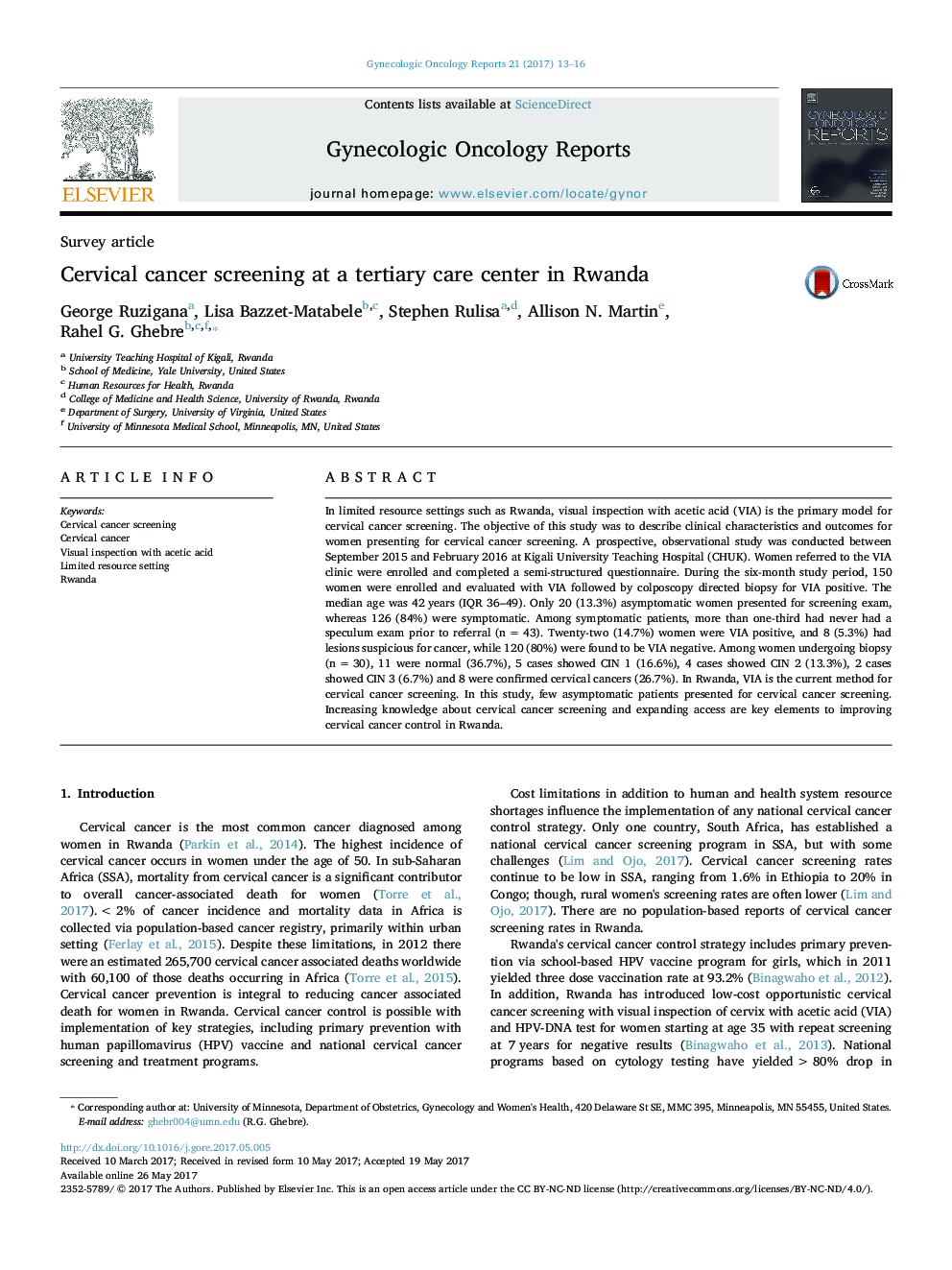| Article ID | Journal | Published Year | Pages | File Type |
|---|---|---|---|---|
| 5695532 | Gynecologic Oncology Reports | 2017 | 4 Pages |
Abstract
In limited resource settings such as Rwanda, visual inspection with acetic acid (VIA) is the primary model for cervical cancer screening. The objective of this study was to describe clinical characteristics and outcomes for women presenting for cervical cancer screening. A prospective, observational study was conducted between September 2015 and February 2016 at Kigali University Teaching Hospital (CHUK). Women referred to the VIA clinic were enrolled and completed a semi-structured questionnaire. During the six-month study period, 150 women were enrolled and evaluated with VIA followed by colposcopy directed biopsy for VIA positive. The median age was 42 years (IQR 36-49). Only 20 (13.3%) asymptomatic women presented for screening exam, whereas 126 (84%) were symptomatic. Among symptomatic patients, more than one-third had never had a speculum exam prior to referral (n = 43). Twenty-two (14.7%) women were VIA positive, and 8 (5.3%) had lesions suspicious for cancer, while 120 (80%) were found to be VIA negative. Among women undergoing biopsy (n = 30), 11 were normal (36.7%), 5 cases showed CIN 1 (16.6%), 4 cases showed CIN 2 (13.3%), 2 cases showed CIN 3 (6.7%) and 8 were confirmed cervical cancers (26.7%). In Rwanda, VIA is the current method for cervical cancer screening. In this study, few asymptomatic patients presented for cervical cancer screening. Increasing knowledge about cervical cancer screening and expanding access are key elements to improving cervical cancer control in Rwanda.
Related Topics
Health Sciences
Medicine and Dentistry
Obstetrics, Gynecology and Women's Health
Authors
George Ruzigana, Lisa Bazzet-Matabele, Stephen Rulisa, Allison N. Martin, Rahel G. Ghebre,
